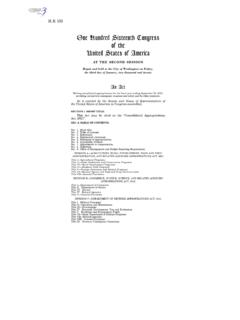Transcription of Phase-Shifted Full Bridge DC/DC Power Converter Design …
1 Phase-Shifted full Bridge DC/DC Power Converter Design Guide Abstract The phase shifted full Bridge (PSFB) Converter is used for DC-DC conversion in various applications, for example in telecom systems to convert a high voltage bus to an intermediate distribution voltage, typically closer to 48V. PSFB stage provides voltage translation as well as isolation from the line voltage, since this topology includes a transformer. This document presents the implementation details of a digitally controlled PSFB system implemented on the HVPSFB kit from Texas Instruments. This kit converts a 400V DC input to a regulated 12V DC output and is rated for operations up to 600W. Both peak current mode control (PCMC) and voltage mode control (VMC) implementations are described. These highly integrated microcontroller based realizations feature adaptive zero voltage switching (ZVS) and various synchronous rectification schemes, which are discussed here.
2 Details for generating complex gate drive waveforms, required by these control schemes, and intelligent timing control, to optimize system performance under changing operating conditions, are provided. A step by step guide to run and get familiar with the HVPSFB project is also included. A. constant high system efficiency above 10% rated load, novel PCMC waveform generation based on on- chip hardware mechanisms, and simple system implementation are the highlights of this solution. NOTE: If you would like to quickly evaluate this kit without going through the implementation details, please follow the accompanying quick start guide ( ) instead of this document. An IMPORTANT NOTICE at the end of this TI reference Design addresses authorized use, intellectual property matters and other important disclaimers and information. TIDU248 May 2014 Phase-Shifted full Bridge DC/DC Power Converter Design Guide 1.
3 Submit Documentation Feedback Copyright 2014, Texas Instruments Incorporated General Texas Instruments High Voltage Evaluation (TI HV EVM) User Safety Guidelines WARNING. Always follow TI's setup and application instructions, including use of all interface components within their recommended electrical rated voltage and Power limits. Always use electrical safety precautions to help ensure your personal safety and those working around you. Contact TI's Product Information Center http:// for further information. Save all warnings and instructions for future reference. Failure to follow warnings and instructions may result in personal injury, property damage, or death due to electrical shock and burn hazards. The term TI HV EVM refers to an electronic device typically provided as an open framed, unenclosed printed circuit board assembly. It is intended strictly for use in development laboratory environments, solely for qualified professional users having training, expertise and knowledge of electrical safety risks in development and application of high voltage electrical circuits.
4 Any other use and/or application are strictly prohibited by Texas Instruments. If you are not suitable qualified, you should immediately stop from further use of the HV EVM. 1. Work Area Safety (a) Keep work area clean and orderly. (b) Qualified observer(s) must be present anytime circuits are energized. (c) Effective barriers and signage must be present in the area where the TI HV EVM and its interface electronics are energized, indicating operation of accessible high voltages may be present, for the purpose of protecting inadvertent access. (d) All interface circuits, Power supplies, evaluation modules, instruments, meters, scopes and other related apparatus used in a development environment exceeding 50 Vrms/75 VDC must be electrically located within a protected Emergency Power Off EPO protected Power strip. (e) Use stable and nonconductive work surface. (f) Use adequately insulated clamps and wires to attach measurement probes and instruments.
5 No freehand testing whenever possible. 2. Electrical Safety As a precautionary measure, it is always a good engineering practice to assume that the entire EVM. may have fully accessible and active high voltages. (a) De-energize the TI HV EVM and all its inputs, outputs and electrical loads before performing any electrical or other diagnostic measurements. Revalidate that TI HV EVM Power has been safely de- energized. (b) With the EVM confirmed de-energized, proceed with required electrical circuit configurations, wiring, measurement equipment connection, and other application needs, while still assuming the EVM circuit and measuring instruments are electrically live. (c) After EVM readiness is complete, energize the EVM as intended. WARNING: WHILE THE EVM IS ENERGIZED, NEVER TOUCH THE EVM OR ITS ELECTRICAL. CIRCUITS AS THEY COULD BE AT HIGH VOLTAGES CAPABLE OF CAUSING ELECTRICAL.
6 SHOCK HAZARD. 3. Personal Safety (a) Wear personal protective equipment (for example, latex gloves or safety glasses with side shields). or protect EVM in an adequate lucent plastic box with interlocks to protect from accidental touch. Limitation for safe use: EVMs are not to be used as all or part of a production unit. 2 Phase-Shifted full Bridge DC/DC Power Converter Design Guide TIDU248 May 2014. Submit Documentation Feedback Copyright 2014, Texas Instruments Incorporated Introduction 1 Introduction Phase shifted full Bridge (PSFB) DC-DC converters are used frequently to step down high DC bus voltages and/or provide isolation in medium to high Power applications like server Power supplies, telecom rectifiers, battery charging systems, and renewable energy systems. Traditionally, micro-controllers have been restricted to only performing supervisory or communications tasks in these systems.
7 With the availability of high performing micro-controller devices, it is now possible to use micro-controllers for closing control loops in these systems, in addition to handling the traditional micro-controller functions. The transition to digital Power control means that functions that were previously implemented in hardware are now implemented in software. In addition to the flexibility this adds to the system, this simplifies the system considerably. These systems can implement advanced control strategies to optimally control the Power stage under different conditions and also provide system level intelligence. A PSFB Converter consists of four Power electronic switches (like MOSFETs or IGBTs) that form a full - Bridge on the primary side of the isolation transformer and diode rectifiers or MOSFET switches for synchronous rectification (SR) on the secondary side. This topology allows all the switching devices to switch with zero voltage switching (ZVS) resulting in lower switching losses and an efficient Converter .
8 In this work, ZVS for switches in the one leg of the full Bridge and zero or low voltage or Low Voltage Switching for switches in the other leg is achieved across the complete load range, by changing dead- times for primary side switches based on load conditions. For such an isolated topology, signal rectification is required on the secondary side. For systems with low output voltage and/or high output current ratings, implementing synchronous rectification instead of diode rectification achieves the best possible performance by avoiding diode rectification losses. In this work, current doubler synchronous rectification is implemented on the secondary side with different switching schemes to achieve optimum performance under varying load conditions. A DC-DC Converter system can be controlled in various modes like voltage mode control (VMC), average current mode control (ACMC) or peak current mode control (PCMC).
9 Implementing these different control modes for controlling the same Power stage typically requires redesigning the control circuit along with some changes to the Power stage sensing circuit. With a microcontroller based system, all these modes can be experimented with on the same Design with minimal or no additional changes. Such a system is implemented here using VMC and PCMC control schemes. PCMC is a highly desired control scheme for Power converters because of its inherent voltage feed forward, automatic cycle by cycle current limiting, flux balancing and other advantages. Implementing PCMC for a PSFB system requires complex PWM waveform generation with precise timing control. A new approach to this waveform generation is presented using TMS320F2802x and TMS320F2803x (Texas Instruments Piccolo series) microcontrollers without requiring any additional support circuitry.
10 Unique programmable on-chip slope compensation hardware is used to provide appropriate slope compensation that guarantees open loop stability and eliminates/limits sub-harmonic oscillations at the output. For PCMC implementation with a micro-controller, the regulated output voltage is dependent on the amount of output voltage ripple, which in turn is dependent on the load. This relation is explained in detail and different solutions are suggested. Peak efficiency greater than 95% and efficiency greater than 90% down to 10% load is achieved with the 600W PSFB system used here. TIDU248 May 2014 Phase-Shifted full Bridge DC/DC Power Converter Design Guide 3. Submit Documentation Feedback Copyright 2014, Texas Instruments Incorporated Introduction Basic Operation Figure 1 shows a simplified circuit of a phase shifted full Bridge . MOSFET switches QA, QB, QC and QD. form the full - Bridge on the primary side of the transformer T1.













